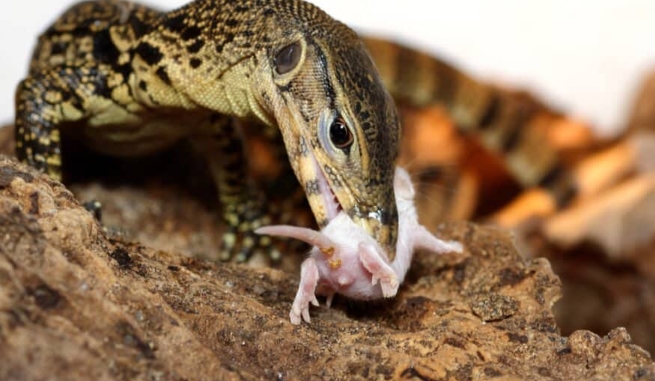Monitor lizards are known for their unique diet which consists of a variety of foods. Understanding what these lizards eat is important to their overall health and well-being.
1. Insects and small animals:
Monitor lizards are carnivorous reptiles, meaning they primarily eat insects and small animals such as rodents, birds, and even other lizards. These foods provide them with essential nutrients and proteins needed for their growth and development.
2. Eggs and carrion:
In addition to live prey, monitor lizards also consume eggs and carrion. They are known to scavenge for food, feeding on the remains of dead animals they find in their environment. This behavior helps them to maintain a balanced diet and ensures they are getting all the nutrients they need.
3. Vegetation:
While monitor lizards are primarily carnivorous, they may also consume vegetation on occasion. This usually happens when they are unable to find their usual prey or when their stomachs need a break from digesting heavy meats. Some monitor lizards have even been observed eating fruits and vegetables.
4. Hunting and feeding behavior:
Monitor lizards are skilled hunters and use their sharp claws and powerful jaws to catch and kill their prey. They are opportunistic feeders, meaning they will eat whatever food source is available to them. This adaptability has helped them survive in a wide range of habitats.
5. Importance of a balanced diet:
It is important for monitor lizards to have a balanced diet that includes a variety of foods. Without a proper diet, they can become malnourished and develop health problems. Providing them with a mix of insects, small animals, eggs, and even some vegetation will help keep them healthy and thriving.
In conclusion, understanding the unique diet of monitor lizards is essential for their care and well-being. By providing them with a variety of foods and ensuring they have a balanced diet, owners can help ensure that their pet lizard remains healthy and happy.

